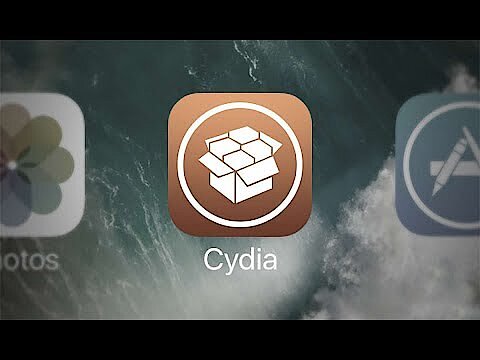Jailbreak: What is involved in advanced user access to iOS devices?
Mobile operating systems like Android or iOS give mobile device users powerful and secure default software solutions for everyday use of their smartphones and tablets. Besides being tailored to users’ requirements and needs, they are also extremely easy to operate and manage.
However, high levels of convenience and security come at a price and manufacturers restrict access to the file system by default. You can only install apps without the Play Store and App Store or uninstall pre-installed system programs if you break these locks. On Android, this process is called rooting. On iOS, it’s called a jailbreak. But what is a jailbreak and how do you perform it on various models?
What is a jailbreak?
Apple prioritises security across all its devices, which is why the firmware and system software contain appropriate security mechanisms. The manufacturer operates a closed-world model for its popular iPhones and iPads, which restricts user rights by preventing access to the administrator account. Removing these barriers manually is called a jailbreak. This unlocking process is only possible with special software that modifies iOS. In most cases, you have to run it on an external PC.
We can distinguish between two different jailbreak types: Tethered jailbreaks allow you to restart the unlocked device using a separate PC. So if the device crashes or is shut down, you have to connect it to the computer first and boot it with the software you used. This somewhat unpractical process for unlocking the system has now been replaced by untethered jailbreaks, which allow the iPhone, iPad, etc. to boot unaided.
Most of the iOS jailbreak solutions available are provided by the iPhone Dev Team developer group, who published JailbreakMe, the tool that unlocked the first iPhone and iPod models in 2007. Later, the jailbreaks for the iPhone 4, 5 and 6 proved particularly popular. However, as of the release of iOS 10, interest in jailbreaking has decreased significantly because the system software has closed most loopholes and added hardware protection mechanisms. The benefits of jailbreaking devices for users now are relatively small.
What advantages does a jailbreak have for iPad and iPhone users?
At first glance, iOS jailbreaks would appear to be wholly beneficial to users. After all, in principle, all they do is give additional administrative and app management options. However, unlocking system access manually also brings with it a series of risks you must be aware of if you are considering a jailbreak for your Apple device. For example, the unlocking process itself could damage the system, preventing the mobile device from working properly afterwards. It is extremely unlikely that Apple will take your device back if this is the case, which is generally the case for damage resulting from a jailbreak attempt.
Furthermore, jailbreaks and the resulting access to administrator don’t just open the system up to you, but also to potential attackers. Unprotected app installations not only make it easier for criminals to sneak spyware and malware onto your iPhone or iPad, it also allows them to do more harm with their tools. Another fundamental problem of the hacked mobile devices is that if a new official version of iOS is published, you cannot install it, stopping you from using the latest features.
The key problems and risks of iOS jailbreaks are:
- The jailbreak process can damage the system and risks compromising the functionality of iOS.
- The system becomes more susceptible to malware and spyware.
- The potential for damage by malware and spyware is elevated.
- Guarantee and warranty claims may become void.
- You may not be able to upgrade to new iOS versions easily.
What are the risks of jailbreaks?
At first glance, iOS jailbreaks would appear to be wholly beneficial to users. After all, in principle, all they do is give additional administrative and app management options. However, unlocking system access manually brings with it a series of risks you must be aware of if you are considering a jailbreak for your Apple device. For example, the unlocking process itself could damage the system, preventing the mobile device from working properly afterward. It is extremely unlikely that Apple will take your device back if this is the case, which is generally the case for damage resulting from a jailbreak attempt.
Furthermore, jailbreaks and the resulting access to administrator don’t just open the system up to you, but also potential attackers. Unprotected app installations not only make it easier for criminals to sneak spyware and malware onto your iPhone or iPad, it also allows them to do more harm with their tools. Another fundamental problem of the hacked mobile devices is that if a new official version of iOS is published, you cannot install it, stopping you from using the latest features.
The key problems and risks of iOS jailbreaks are:
- The jailbreak process can damage the system and risks compromising the functionality of iOS.
- The system becomes more susceptible to malware and spyware.
- The potential for damage by malware and spyware is elevated.
- Guarantee and warranty claims may become void.
- You may not be able to upgrade to new iOS versions easily.
How do you jailbreak iPads and iPhones?
In recent years, Apple has constantly upgraded iOS and mobile devices hardware, making the protective mechanisms more sophisticated to prevent activation of administrative access. Besides, regular addition of new features has also constantly reduced the necessity or benefit of a jailbreak. Hackers reported successfully hacking recent models like the iPhone 11, but that is only of interest to specialists.
However, revisions of iOS and the device hardware have also had a fundamental effect on the iOS jailbreaks that were in great demand, i.e. the jailbreaks of the iPhone 4, 5 and 6. Every time a new system and model version is released, the jailbreak measures also had to be adapted, which is why there is no uniform unlocking solution. For example, the jailbreak for the iPad 2 does not work for the iPhone 4, which is why you need different tools or procedures for each device (if you have the expertise required and want to unlock the device independently).
However, the standard approach using a jailbreak tool is always the same, regardless of the device, model and iOS version.
- Before performing the jailbreak, you should back up your personal data on your iPhone or iPad. Connect the device to a computer via USB and transfer your personal files or save them in your iCloud account.
- After the backup, deactivate the code lock or Touch ID, as this feature has to be deactivated for the jailbreak process. To do so, open the settings and tap “Touch ID & Code”. Then deselect all activated lock mechanisms.
- Now, connect the mobile device to a PC, which you need to install the software required for the iOS jailbreak. Allow this type of connection if the iPad or iPhone displays a dialogue box prompting you to do so.
- The fourth step is to find and download the right jailbreak programme for your Apple device and iOS version. You can choose between tools for macOS or Windows, though some of the programmes are available for both systems.
- After installing the selected tool, start the jailbreak process and follow the remaining instructions. For example, some applications recommend that you do a fresh iOS install and/or activate flight mode to speed up the process.
Most jailbreak tools for iPhone 6 and later models, as well as for iPad 2, automatically install package manager Cydia too. If they don’t, simply download and install the app store alternative manually after unlocking the administrator account.
Please note the legal disclaimer relating to this article.



